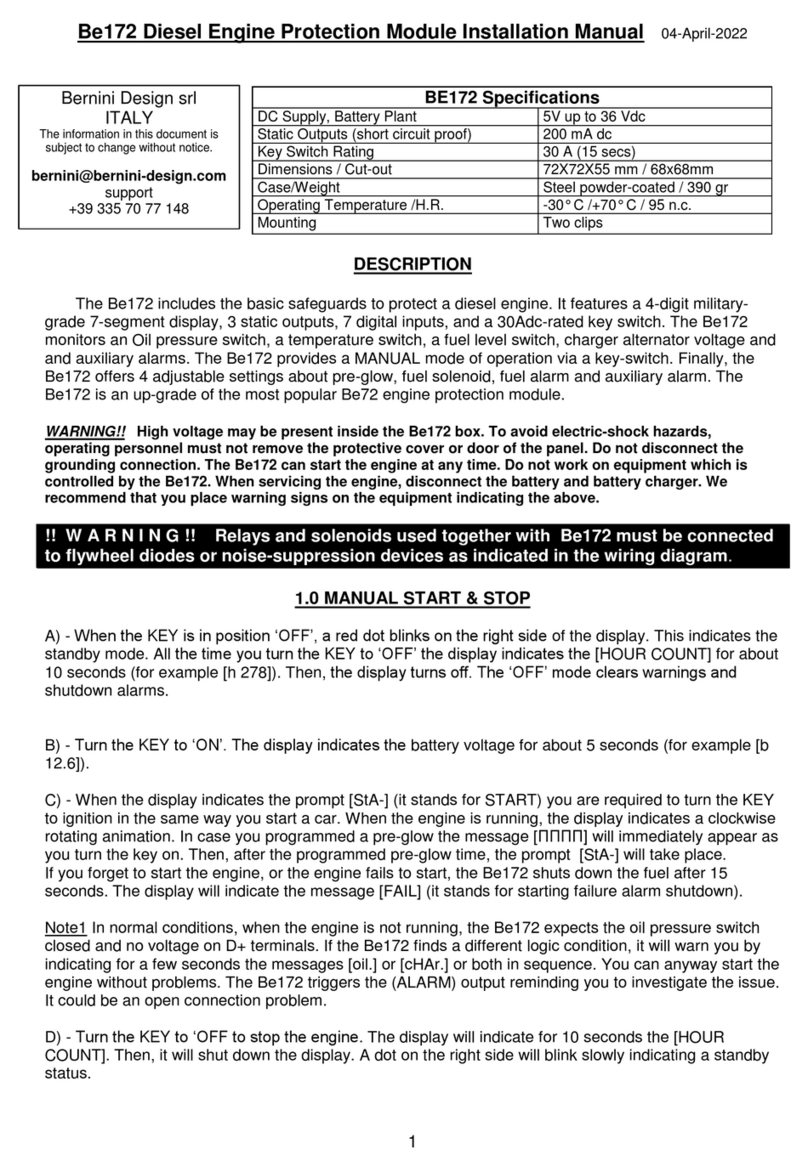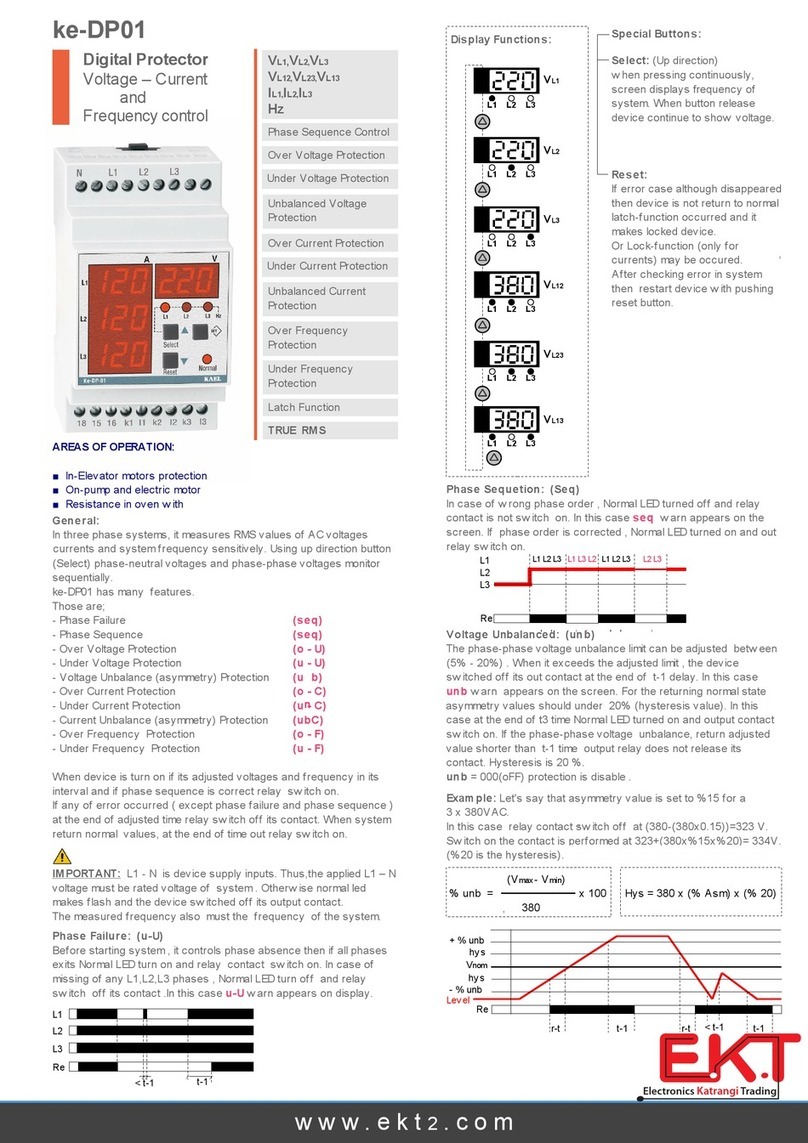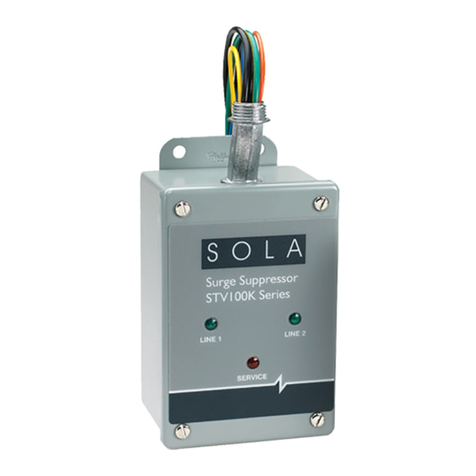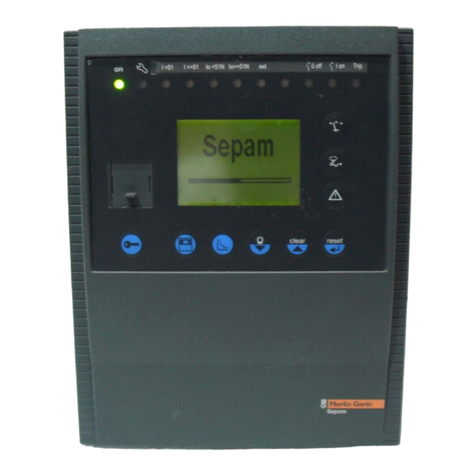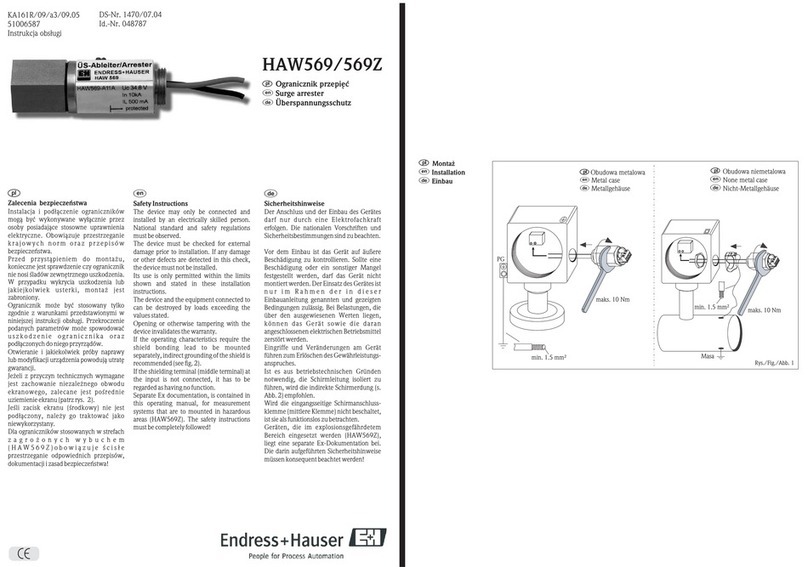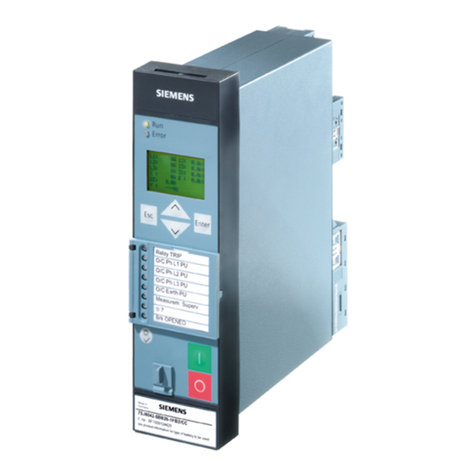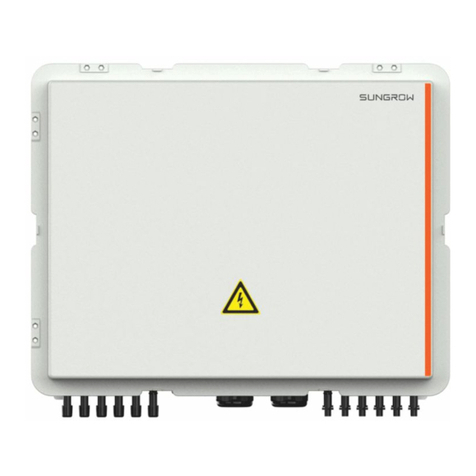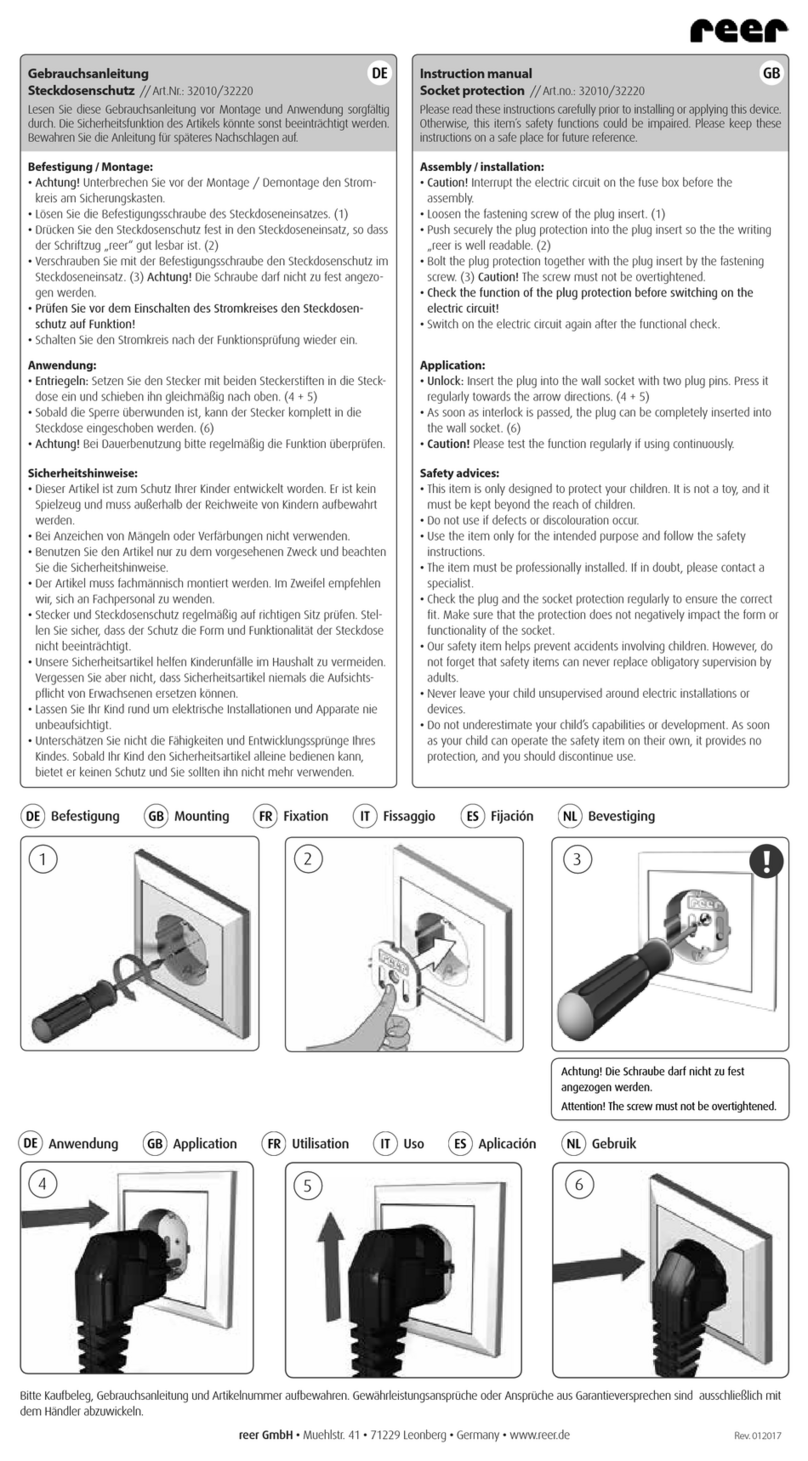2. Unit configuration
During the configuration stage user has to determine the VAMP
121(D) functionality.
The amount of used arc sensors is configured by moving the
install dipswitches to “ON” position.
During the configuration stage the user must configure all the
following dipswitches.
The unit is configured using the dipswitches:
Dipswitches 1-5 (see Figure 2-1):
The Clear switch (nr 1 in Figure 2-1) is moved to the ON
position to reset unit activation- and trip-information, as well as
the trip relay, if latched. This switch is also used to clear any
fault messages. When the system is in use, this switch must
always be in the OFF position.
The Latch switch (nr 2 in Figure 2-1) enables latching of the
trip relay. When it is in ON position the latching function is
activated.
The Operate/ Install switch (nr 3 in Figure 2-1) is used to read
in the configuration (number of connected arc sensors) to the
unit eeprom-memory. When the desired number of sensors
has been connected, the switch is briefly moved to ON
position, to allow the unit register the number of connected arc
sensors. When the system is in use, the switch must be in the
Operate (OFF) position for the self-supervision to function.
The Double switch (nr 4 in Figure 2-1) enables the choice of
trip criteria’s. In the “ON” position, two sensor inputs must be
activated at the same time for the unit to trip. In the OFF
position (normal) the unit trips if any of the sensor inputs
become active.
The Block switch (nr 5 in Figure 2-1) temporarily blocks the
trip relay (in the ON position) when e.g. testing the unit. The
switch must always be in OFF position when the system is in
use. As long as the switch is in ON position the System Fault
alarm is activated. The same function is attained by activating
the binary input on connector X2-7, X2-8 (see also inputs) if
switch 8 is “OFF”. When the blocking function is activated, the
error led is lit and the SF-relay activated.


